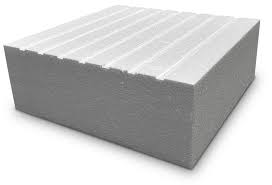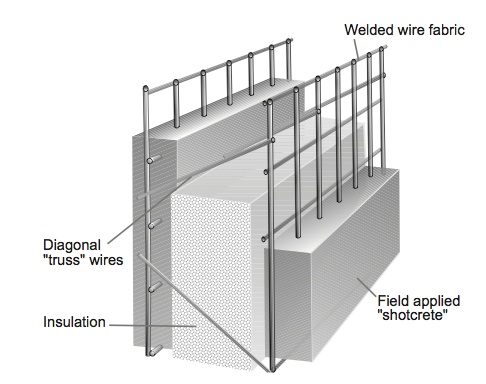 2024.09.03
2024.09.03

1. The external wall insulation layer falls off
Due to the quality problems of the materials used and the lack of attention during the construction process, the external wall insulation board is prone to displacement, hollowing, and falling off, and the slurry insulation layer has hollowing and falling off. If not handled in time, the insulation effect of the wall will be greatly reduced.
Reasons:
1. Base structure factors. The external wall of the frame structure is prone to insulation layer damage caused by masonry deformation at the joints between concrete beams and columns and masonry. The scaffolding openings and other parts are not solid, resulting in the insulation layer being damaged due to the loose base. The external wall decorative components are not fixed firmly and shifted, forming a push-pull effect, causing the insulation layer to be partially hollow and cracked, and then seeping for a long time, which eventually leads to the insulation layer falling off;
2. Improper pressure resistance measures. The surface load of the insulation board is too large, or the negative wind pressure resistance measures are unreasonable. For example, the non-nail bonding method is used for the exterior walls of coastal areas or high-rise buildings, which can easily cause the insulation board to be damaged by wind pressure and fall off;
3. Improper wall interface treatment. Except for clay brick walls, other walls should be treated with interface mortar before applying slurry insulation materials, otherwise it is easy to cause direct hollowing of the insulation layer or failure of the interface treatment material, forming hollowing of the interface layer and the main wall, and forming hollowing of the insulation layer. The surface of the insulation board also needs to be treated with interface mortar, otherwise it will also cause local hollowing of the insulation layer.
2 Cracking of the plastering layer
The exterior wall insulation plastering layer consists of plastering mortar and reinforcement mesh. The plastering mortar is divided into bottom mortar and surface mortar. It is understood that when constructing the plastering layer, first apply the bottom mortar to the surface of the installed external insulation board, add the reinforcement mesh, and shallowly apply the reinforcement mesh into the bottom mortar, and then apply the surface mortar on it. The thickness must not be less than 3 mm, and the pattern must be exposed without revealing the mesh.

Plastering mortar, also known as anti-crack mortar or anti-crack mortar, plays a key role in the entire external insulation system and builds a reliable reinforced protective layer for the external insulation board. The cracked plastering layer cannot solve the problems of thermal insulation, heat insulation, wind pressure resistance, fire resistance, freeze-thaw resistance, waterproof, weather resistance, flame retardant, breathable, cracking, etc. of external insulation.
Reasons:
1. Material factors. The density of the insulation board for exterior wall insulation should be 18~22kg/m3. Some construction units will use inferior insulation boards below 18kg/m3. The density is insufficient, which can easily lead to cracking of the plaster mortar layer. The natural shrinkage time of the insulation board in the natural environment is as long as 60 days. Due to factors such as capital turnover and cost control of the production enterprise, the insulation board with an aging time of less than seven days has been installed on the wall. As a result, the insulation board after the wall continues to shrink, and the plaster mortar layer adhered to the insulation board is cracked;
2. Construction technology. The flatness of the base surface is too large, and the use of adhesive thickness, multi-layer board, surface grinding and leveling adjustment methods will lead to defects in insulation quality; dust, particles and other substances on the surface of the base that hinder adhesion have not been treated at the interface; the bonding area of the insulation board is too small, does not meet the specifications, and does not meet the quality requirements of the bonding area; the rice mortar layer is constructed under exposure or high temperature weather, and the surface layer loses water too quickly, resulting in cracks;
3. Temperature difference changes. The thermal conductivity of the expanded polystyrene board and the anti-crack mortar is different. The thermal conductivity of the expanded polystyrene board is 0.042W/(m·K), and the thermal conductivity of the anti-crack mortar is 0.93W/(m·K), which is 22 times different. In summer, when the sun shines directly on the surface of the plastering mortar, the surface temperature of the plastering mortar can reach 50~70℃. In case of sudden rainfall, the temperature of the mortar surface will drop to about 15℃, and the temperature difference can reach 35~55℃. This temperature difference, the influence of the temperature difference between day and night and the seasonal temperature, leads to a large difference in the deformation of the plastering mortar layer, which is prone to cracks.
3 Indoor condensation
Because there are too many decorative lines picked out with concrete on the inner wall, and the concrete pouring ratio has been determined when doing insulation, the insulation treatment of this part is abandoned. These exposed concrete parts that have not been treated with insulation will cause frost and condensation in the room, which is easy to cause dampness and mold on the wall.
Reasons:
1. The node design of the window is unreasonable. In energy-saving design, there is only one principle for the design position of the window, that is, to set different positions according to different insulation forms. When using external insulation, it should be close to the outside of the wall. Try to connect the insulation layer and the window into a whole to reduce the insulation breakpoint between the insulation layer and the window body and avoid the occurrence of thermal bridges. Some designers ignore the impact of heat transfer of the outer window blade on the heat consumption index in the design, and do not take insulation design treatment for the window blade around the outer window opening. This leads to indoor condensation;
2. Formation of cold and hot bridges. The unreasonable design of the insulation breakpoint leads to the formation of a thermal bridge effect around the window hole. The indoor humidity dead corner should be improved, and good ventilation conditions should be maintained to fundamentally block the thermal bridge;
3. The waterproof design is unreasonable. The design of the window does not take into account the dripping treatment at the upper base and the waterproof design treatment at the lower base of the window. Water can easily enter the interior of the insulation system from the connection between the insulation layer and the window base, thereby causing damage to the external insulation system.

External wall tiles are hollow and fall off
News about injuries caused by external wall tiles and falling materials are common. Quality problems caused by mistakes in construction and the influence of temperature may be one of the factors that cause problems with external wall tiles. In addition to making the wall look ugly, hollow and falling tiles are also prone to accidents.
Reasons:
1. Temperature changes. The temperature difference between different seasons and day and night makes the facing tiles affected by temperature stress in three dimensions. The facing layer will produce local stress concentrated at the intersection of the vertical and horizontal walls or the roof and the wall. If it is in the middle of a large area of the wall, or the local extrusion of adjacent tiles, it will cause the tiles to fall off;
2. Material quality. Because the mortar layer is deformed and hollow, the tiles fall off in a large area; the composite wall is incompatible with the materials of each layer and the deformation is not coordinated, resulting in displacement of the tiles; the waterproofing measures for the external wall are not in place. It causes water to penetrate, causing repeated freeze-thaw cycles, causing damage to the bonding layer of the tiles, and causing the tiles to fall off;
3. External force factors. Some external factors can also cause the tiles to fall off. For example, uneven settlement of the foundation can cause deformation and dislocation of the walls of the structure, resulting in severe cracking of the walls and falling tiles. Natural factors such as wind pressure and earthquakes can also cause tiles to fall off.
A brief analysis of the causes and solutions of the falling off of the external wall insulation layer. With the advancement of building energy conservation in my country, more than 95% of new buildings have adopted the enclosure structure insulation system, among which the external wall insulation technology is particularly widely used. However, there are not many domestic companies that have wall insulation technology research and innovation, and most of the technologies used are imported foreign technologies. Although after more than 20 years of promotion and application, the application of external wall insulation technology in China has become more and more mature, many engineering quality problems have also occurred in actual projects. For example, cracking, hollowing, falling off, condensation of the external wall, and fire hazards caused by the construction process. “Falling off” and “fire” have always been the two major disasters of external wall insulation projects at home and abroad, causing a lot of losses and inconveniences to residents. Among them, the frequent falling off of building external wall insulation has caused adverse effects on society.


